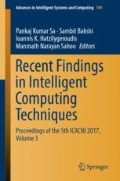Abstract
Information technology software tools are used in all walks of life. These software are developed using appropriate process models that are built on software development life cycle (SDLC) stratiform stage activities in linear or nonlinear order. These stratiform stages transform the requirements of ensuing software from general to human and machine understanding. The requirements gathered in the form of software requirements specification (SRS) of ensuing software is always bidirectional between each pair of end users and is non-sequenceable. This information flow is captured in the form of graph. The end software executed by machine is in a control flow-ordered segments of sequel of statements with one start and many ends depending on values of branching attributes analogical to hierarchical tree structure. Thus, the streamlining process should be in the direction from graph to tree structure. This paper, attempts to transform the quintessential part of information flow of the requirements present in SRS linguistically, reaching directionally and with respect to business aspect towards the stratiform analysis stage. The correctness and completeness of the transformation is authenticated through the maintenance of the scope.
Access this chapter
Tax calculation will be finalised at checkout
Purchases are for personal use only
References
Handigund, S.M., Bhat S.: An ameliorated methodology for the abstraction of object class structures for an information system. In: Proceedings of IEEE International Conference on Computer Applications and Industrial Electronics (ICCAIE-2010), Kuala Lumpur, Malaysia, pp. 362–367 (2010)
Handigund, S.M.: Reverse engineering of legacy COBOL systems. Ph.D. Thesis, Indian Institute of Technology Bombay (2001)
Wirfs-Brock, R., Wilkerson, B., Wiener, L.: Designing Object-Oriented Software. Prentice-Hall of India Private Limited, New Delhi (2000)
Booch, G., Rumbaugh, J., Jacobson, I.: Unified Modeling Language User Guide, 2nd edn, p. 496. Addison-Wesley Professional, published May 19, 2005
Rumbaugh, J., Blaha, M., Premerlani, W., Eddy, F., Lorensen, W.: Object-Oriented Modeling and Design. Prentice Hall (1996). ISBN 0–13-629841-9
Frank Tips: Generation of Program Analysis tools. Ph.D. thesis, Amsterdam University (1995)
Weiser, Mark: Program Slicing. IEEE Trans. Softw. Eng. 10(4), 352–357 (1984)
Jalote’s, Pankaj: Software Engineering A Precise Approach, 1st edn. WILEY, India (2010)
Handigund, S.M., et al.: An ameliorated methodology to abstract object oriented features from programming system. Procedia Comput. Sci. Elsevier J. 62, 274–281 (2015)
Project management body of knowledge. PMBOK 5th edn. Published by project management institute (PMI) 2012
Coremen, T.H., et al.: Introduction to ALGORITHMS, 2nd edn. PHI Learning Private limited (2009)
Handigund, S.M.: Presented a tutorial on ‘Unraveling the hidden treasures of research avenues in object oriented technology’. In: The 2011 World Congress in Computer Science, Computer Engineering and Applied Computing, Las Vegas, Nevada, USA, July 18–21 (2011)
Kreyszig, E.: Advanced Engineering Mathematics, 10th edn. Wiley Publisher, Dec 2010
Gregorg Heileman, L.: Data Structures, Algorithms and Object Oriented Programming. McGra-Hill Book Co. International Editions, Singapore (1996)
Acknowledgements
Words are insufficient to express our deep sense of gratitude to Dr. D. B. Phatak, Chair Professor of Department of Computer Science and Engineering, IIT Bombay, for his inspiration.
Author information
Authors and Affiliations
Corresponding author
Editor information
Editors and Affiliations
Rights and permissions
Copyright information
© 2018 Springer Nature Singapore Pte Ltd.
About this paper
Cite this paper
Handigund, S.M., Arunakumari, B.N., Chikkamannur, A. (2018). Automated Methodology to Streamline Business Information Flow Embedded in SRS. In: Sa, P., Bakshi, S., Hatzilygeroudis, I., Sahoo, M. (eds) Recent Findings in Intelligent Computing Techniques . Advances in Intelligent Systems and Computing, vol 709. Springer, Singapore. https://doi.org/10.1007/978-981-10-8633-5_33
Download citation
DOI: https://doi.org/10.1007/978-981-10-8633-5_33
Published:
Publisher Name: Springer, Singapore
Print ISBN: 978-981-10-8632-8
Online ISBN: 978-981-10-8633-5
eBook Packages: EngineeringEngineering (R0)

